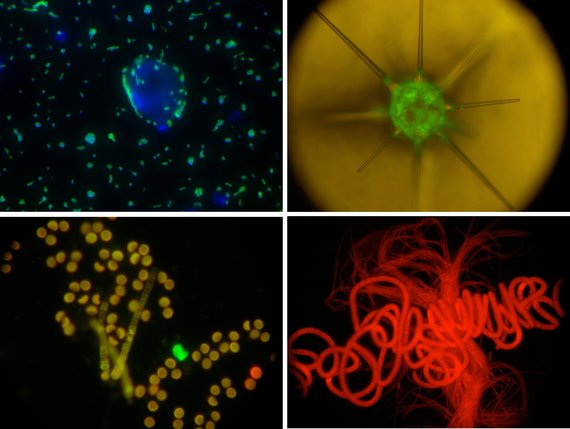Page path:
- Press Office
- Press releases 2012
- 07.06.2012 Publications in freshwater and marin...
07.06.2012 Publications in freshwater and marine biology: Max Planck scientists rank in the top positions
“This is a very good time to be a microbiologist”, Davies states in his review article “The Renaissance of microbiology“ in 1998. This is still true 14 years later, and especially so for marine microbiologists. The investigation of marine microbes and the publication of their results gained them the top positions of the publication ranking, as released by the magazine Laborjournal. The authors of the study refer to figures from the data base Web of Science of the Thomson Institute for Scientific Information (ISI). For the study the most cited scientific articles to date of the years 2006-2009 were considered.
The publications of the Max Planck Institute for Marine Microbiology comprise many research areas that, at the first glance, are not recognizable as microbiology to a layman: The publication of Frank Oliver Glöckner, Head of the group Microbial Genomics and Bioinformatics, and his colleagues about an online data base for the ribosomal RNA sequence analysis took second place of the most cited publications. Also the directors Rudolf Amann, Head of the Department of Molecular Ecology and Marcel Kuypers, Head of the Department of Biogeochemistry, as well as Antje Boetius, Head of the HGF MPG Joint Research Group for Deep Sea Ecology and Technology are among the first ten positions of the most cited scientists.
The publications of the Max Planck Institute for Marine Microbiology comprise many research areas that, at the first glance, are not recognizable as microbiology to a layman: The publication of Frank Oliver Glöckner, Head of the group Microbial Genomics and Bioinformatics, and his colleagues about an online data base for the ribosomal RNA sequence analysis took second place of the most cited publications. Also the directors Rudolf Amann, Head of the Department of Molecular Ecology and Marcel Kuypers, Head of the Department of Biogeochemistry, as well as Antje Boetius, Head of the HGF MPG Joint Research Group for Deep Sea Ecology and Technology are among the first ten positions of the most cited scientists.

The beauty of the micro-world: free living and attached bacteria, visualized by fluorescence in situ hybridisation (upper left, D. Franzke), foraminifer that belongs to the unicellular eukaryotes (upper right, R. Foster), unicellular and filamentous cyanobacteria and heterotrophic bacterial cells, (lower left, R. Foster), filaments of the cyanobacteria Trichodesmium and Katagynemene (lower right, R. Foster).
How come that marine microbiology witnesses such a boom? One of the reasons is certainly the ongoing development of deep-sea technology. Scientists at the Max Planck Institute for Marine Microbiology often advance into remote marine areas, and the development of the deep-sea technology allows them to continually access new areas with so far unknown communities. Besides, marine microbes contribute to the global cycles of carbon, nitrogen, sulfur and iron, and hence shape the chemistry of the ocean. The ocean is in constant exchange with the atmosphere, and ultimately marine microbes influence our climate, which has led to the great popularity of marine microbiology. For each solved question the advancing exploration of the ocean raises many new questions. Antje Boetius says: “As of lately we know that each gram of deep-sea mud contains up to 10.000 species of microorganisms most of which are unknown”. Thus, for the next decades there is plenty left to do.
Rita Dunker
Literature
Publikationsanalyse 2006-2009: Süßwasser- & Meeresbiologie von Lara Winckler, Laborjournal 04/2012
Davies, J. The Renaissance of microbiology. 1998. Internatl. Microbiol. 1: 255-258.
Rita Dunker
Literature
Publikationsanalyse 2006-2009: Süßwasser- & Meeresbiologie von Lara Winckler, Laborjournal 04/2012
Davies, J. The Renaissance of microbiology. 1998. Internatl. Microbiol. 1: 255-258.
